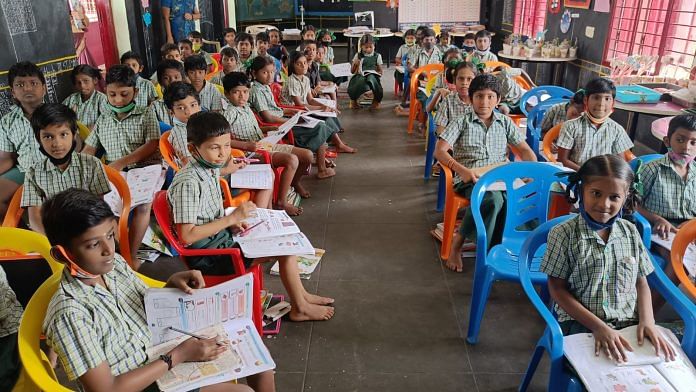A collective ‘SSSssss’ wafts across the small, colourful classroom. Under the ceiling fan, a string of paper bears flap in the light breeze. Three little boys, all aged 5, stand close to the blackboard holding up a letter each: S, U, and “M is upside down, miss,” a couple of students scream.
Mid-morning on Thursday, inside this first standard classroom at the Greater Chennai Primary School in Porur, M. Muthukamakshi, clad in a pale yellow saree, is teaching the children ‘CVC words’ – Consonants, Vowels, Consonants.
“Earlier, children would just learn generic things like ‘A’ for ‘Apple’, but the CVC word activity helps them bring together letters. It is an integral part of the Ennum Ezhuthum methodology,” she says, about a Tamil Nadu government mission, which translates to ‘Numbers, Letters’ that seeks to address learning gaps in students who have been away from school because of the Covid-19 pandemic.
Tamil Nadu has traditionally been one of the high-performing states on school education and learning outcomes. So, it may be surprising that the M.K. Stalin-led DMK government would now go back to the basics with this new initiative. But the two years of the pandemic took a toll even on the best of the states.
The mission Ennum Ezhuthum, which was launched by Stalin in June this year, aims at ensuring foundational literacy and numeracy for 27 lakh students in government and government-aided schools in the next three years. The learning methodologies are divided up as Arumbu (Class 1), Mottu (Class 2) and Malar (Class 3).
At the launch, Stalin noted that schools across the state were shut for more than 19 months during the pandemic. “Regular classes alone are not enough to bridge the learning gap which is why we devised the programme,” the chief minister said at the event. Trained in three subjects, Tamil, English, and Mathematics, “lessons have been designed in the format of dance, songs, storytelling and puppetry,” he added.
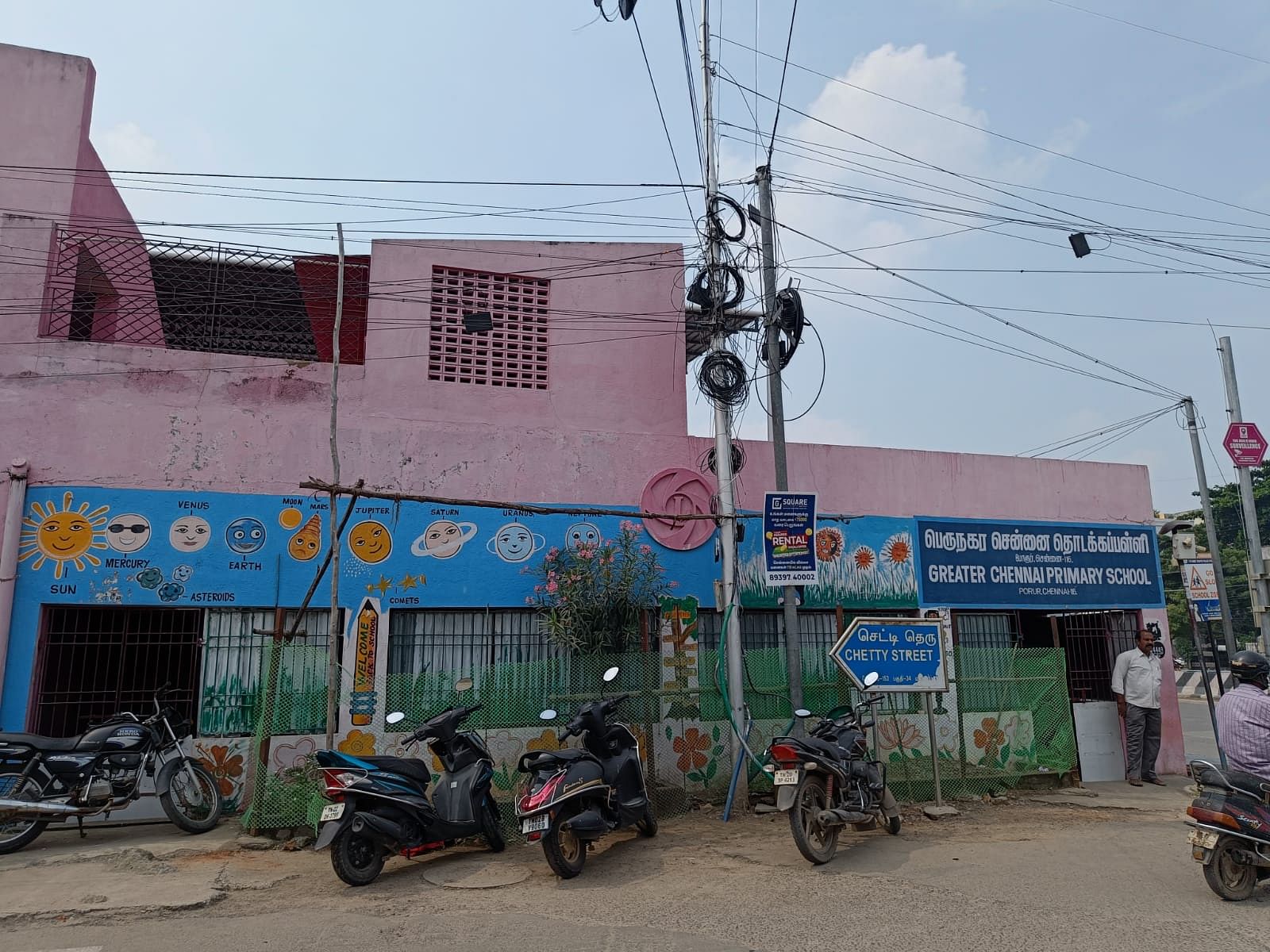
In November 2021, a year and a half into the pandemic in India, the Union Ministry of Education conducted a National Achievement Survey to assess the impact of school closures on students. Around 3.4 million students across 118,000 schools in 720 rural and urban districts were surveyed and it was found that average performance had fallen from about 54 percent to 47 percent between 2017–when the NAS was last conducted–and 2021. Prior to the pandemic, the 2018 Annual Status of Education Report had found that only around 25 percent of students in Class 3 were able to read texts meant for their level.
Also read: Not ‘freebies’ –Tamil Nadu has given India a market-friendly Dravidian welfare model
Business unusual
Back in Porur, before Muthukamakshi launched into CVC words, she stuck puppets on her fingers and sang a song with her students. Starring in her musical was a rooster, a lion, a cat, and a butterfly. On the bench at the back of the class, a large cardboard box serves as the kit box of learning material sent over from the state education department. The tactile materials – a string of beads for counting, or wooden shapes, were ways for students to utilise their sense of touch to enhance learning.
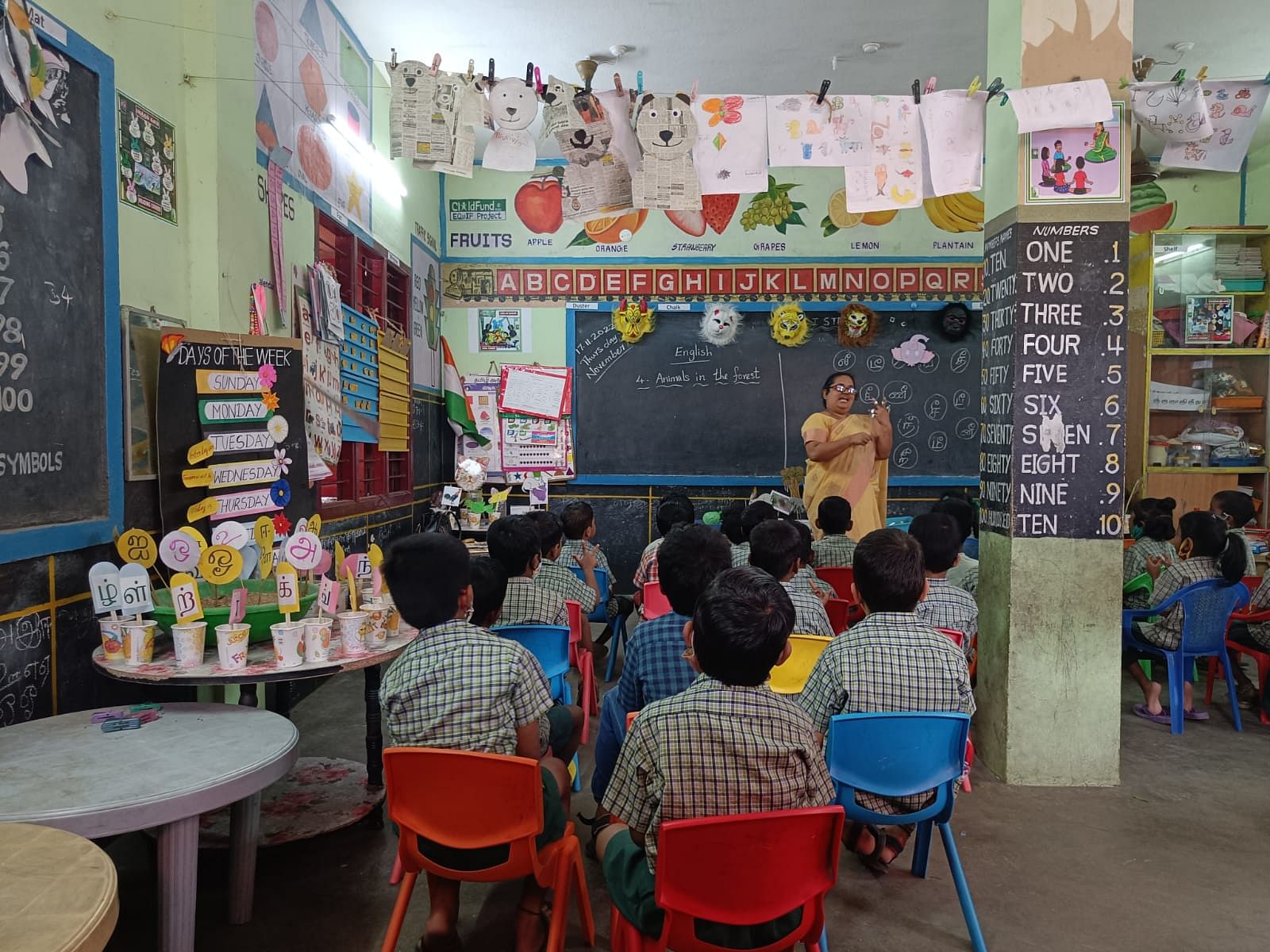
Merlia Shaukath, founder of the Madhi Foundation, the chief management partner on the Ennum Ezhuthum mission, said that the state has mobilised enormous resources to change pedagogy and methodology to suit the reality of a post-pandemic world. “The mission acknowledges that children are coming back to school with learning gaps, and that it cannot be business as usual,” Shaukath said.
Added to this are the complexities. In a 2021 interview, Shaukath noted that “more than 80 percent of classrooms in Tamil Nadu are multi-grade (with students of more than one grade seated in a single classroom and taught by the same teacher), multi-level (with students at varying learning levels, within and across grades) and even multilingual (with English and Tamil medium students being taught together).”
The Ennum Ezhuthum mission meets every child at their respective language and arithmetic skills, she said. Among those who were consulted to re-do the syllabus was V. Sudaroli, a secondary grade teacher at the AMP School in Korattur. “This mission began with a discussion among teachers across different districts of Tamil Nadu,” she said.
Sudorali was part of the team that designed textbooks for Tamil lessons. When ThePrint spoke to her, she was in the middle of supervising the layout for a Malar (Class 3) textbook, instructing a colleague to increase the size of the images to make it more attractive for children. “The deliberations went on for months and expert groups were set up to formulate teaching and learning materials,” she said.
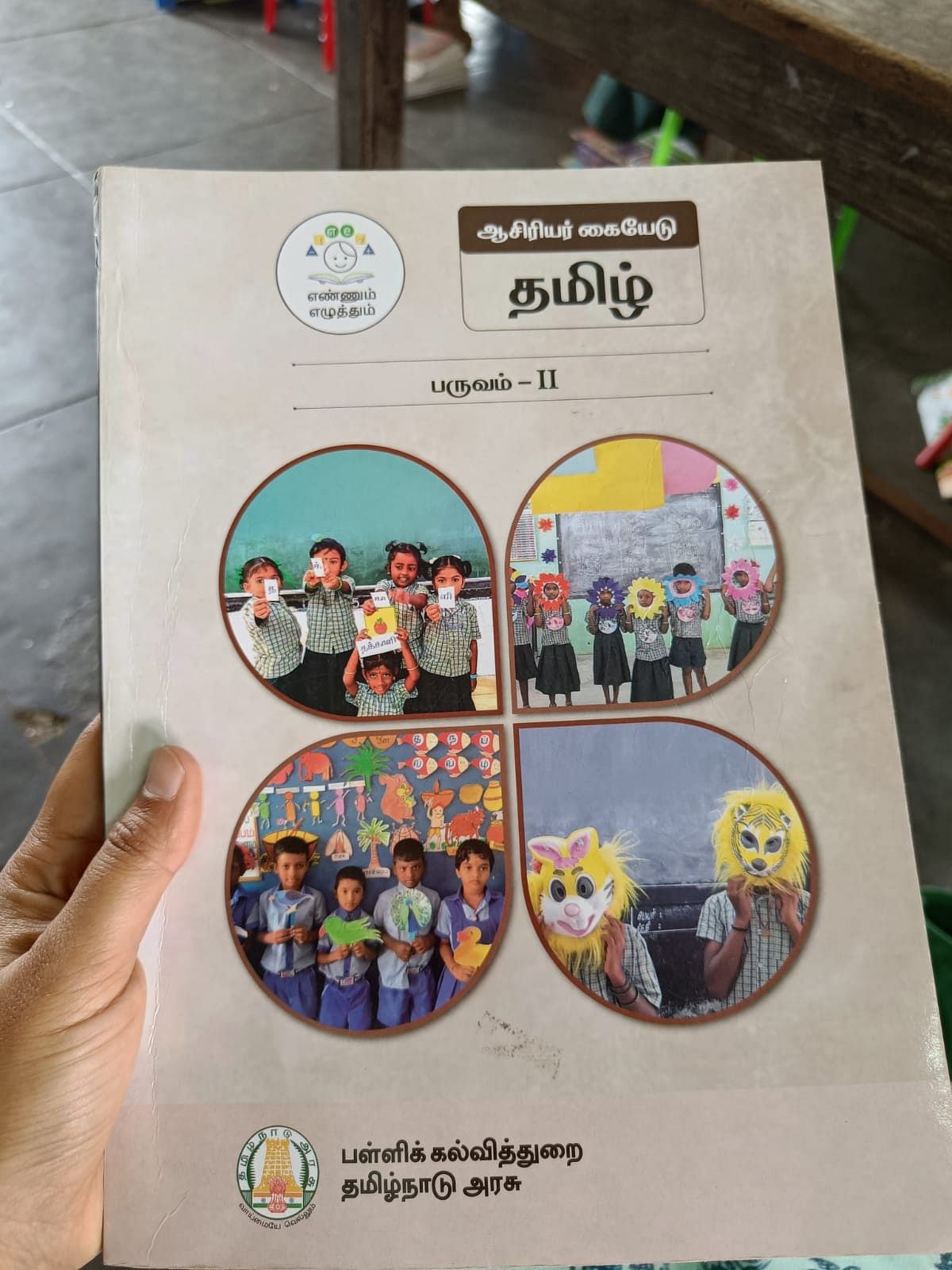
For instance, while school textbooks often have a component at the end of the lesson instructing the teacher on how to conduct the class, the mission divided it up into a teacher’s handbook with teaching methodologies and a student’s workbook. “We spent a lot of time trying to make letters attractive to students in the workbook. A letter will be hidden inside a composite picture, and it becomes a game to find it,” she said. This in some ways takes care of the “boredom” of repetitive learning that language requires.
Also read: What if? 5 student ‘suicides’ in 2 weeks raise big mental health question for Tamil Nadu schools
Visible change
In Muthukamakshi’s class, around noon, six-year-old Mithran’s mother Prabha came to drop off his lunch. “A couple of days ago, we were travelling by bus and my son was able to identify the Tamil characters written inside the bus,” she said, excited that he has adapted well to the Tamil classes coming from an English-medium school. “We have a grocery store below our house and now when I send him to buy something, he is able to add and subtract the currency correctly.”
While environmental sciences and social sciences, which were part of the pre-pandemic syllabus for Classes 1-3, have been integrated into the Ennum Ezhuthum syllabus, there has been a continuous process of feedback for this six-month-old scheme.
Muthukamakshi said she found the teaching and learning materials (TLM) “a bit hard to interpret” when the mission was rolled out in term one of the 2023-24 school year. “So now they (the education department) have clearly indicated at the back of the handbook the kinds of TLM to be used. They provide us with pictures which we can cut out and use,” she said.
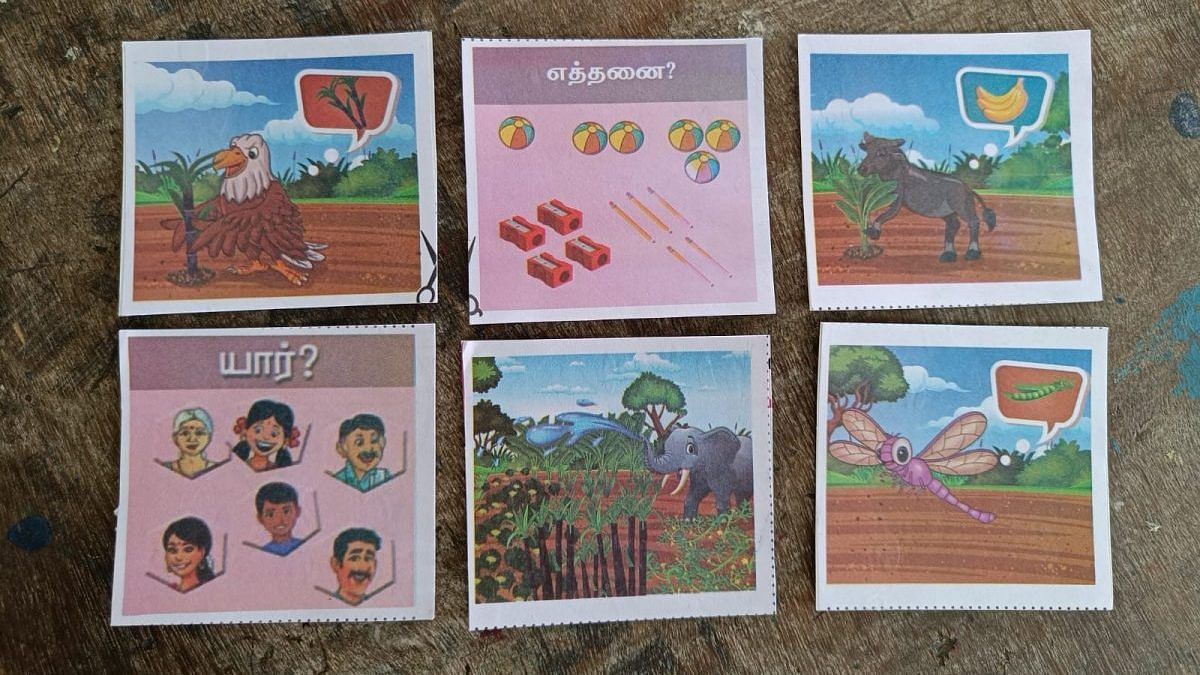
An effective feedback mechanism for the education department has been the teachers’ Telegram group, which has nearly 65,000 members from across the state. Sudaroli said that every Saturday, teachers share feedback on what materials have worked well among their students or teaching innovations they have fashioned. “It is a platform to also speak directly to the Education Commissioner or the officials in the department who listen and take note of the feedback from teachers,” she said.
One of the stakeholders of the mission, who did not wish to be named, said that a major challenge for the mission is the quality of teacher training. “The objective would be to have all the 65,000 teachers teach with the best of their abilities,” the person said. At the beginning of every term, teachers come together for a five-day workshop on the learning materials for the term ahead.
Also read: Stalin’s archaeology push in Tamil Nadu is the stuff of culture wars. Experts have a warning
Levelling up
On the first floor in the primary school in Porur, teacher Mary Emin has a tougher task than Muthukamakshi. Her class size of 60 eight-year-olds is a mixed group of varied learning levels–some Arumbu, some Mottu, and some Malar children. “The biggest challenge is to bring them up to the same level. How to bridge the gap?” she said. “I decided to match the Malar level with the Arumbu level, make them sit next to each other, one guiding the other and it is for a few hours every day,” she added.
Shaukath said that 98 percent of the 27 lakh children were evaluated at the beginning of the school year to gauge which learning stage they fall under. “Based on this, the education department could build an application to monitor the entire scheme.”
On headmaster V. Latha’s phone is the TNSED application, which she logs in for ThePrint’s benefit. From her room at the Porur school, she can monitor the attendance of all 255 students, their evaluations, and their report cards. “Everything is digitised and once a month when all the district teachers get together, we can compare how well our schools are doing,” she said. “Some teachers have definitely become more competitive,” she said with a laugh. “After this scheme came out, the kids seem far more involved at school,” Latha said, and added that it was a difficult task to get them to this stage immediately after a 19-month gap in education.
Muthukamakshi said that her students were very disciplined before Covid. “They had gotten into the habit of sitting in one place and learning.” That has changed, she said, amused. “After Covid, they sometimes call me aunty, amma, akka.”
As the din of the class grew louder, Muthukamakshi paused to look back at her students: “Kutti ma (little ones), be quiet, this reporter has come here to ask about you. Do you want me to say good things or bad things?”
“Good things,” came back the collective screech from 30 five-year-olds.
(Edited by Prashant)


